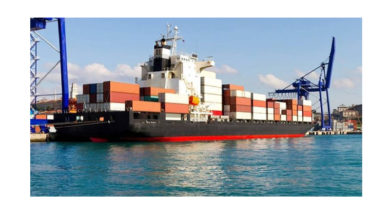Digital printing applications more accessible than ever
The printing industry in the Middle East is moving away from traditional offset style of printing and embracing the new digital style more aggressively. Furthermore, the UAE is on par or ahead of Europe with regard to large format printing applications. These trends and views were shared by industry experts at a media roundtable hosted recently by Canon Middle East focusing on the ‘Rising Trends of Large Format Printing (LFP) in the Middle East’ and aimed to reveal the way forward for the industry in 2016.
Shadi Bakhour, general manager of Canon Emirates, observes that factors such as faster turn-around times, qualitative print runs and more effective control and security of the printing architecture are enabling businesses to move to digital. According to him, this is not a new direction, but is more of a natural evolution.
“The requirements and needs of those businesses which heavily rely on printing are evolving. There is higher demand for variable data printing, customization and personalization; businesses are experimenting with a variety of printing media following customer demands which is therefore causing them to consider digital printing for the various advantages it offers,” says Shadi.
 Ayman Ali, marketing manager, Canon Middle East, concurs that the availability of different types of technologies such as toner-based and ink-based printers has helped shaped this trend.
Ayman Ali, marketing manager, Canon Middle East, concurs that the availability of different types of technologies such as toner-based and ink-based printers has helped shaped this trend.
“The cost for digital printing has dropped dramatically. Five years ago, the quality difference was huge between offset and digital, but now this gap has reduced greatly. In terms of print quality, colour management and customisation, digital provides you with HD-type of clean photo prints; so digital is dominating in that way. A huge demand we see from our customers is to have shorter print runs, as it is cost-effective and fast (500-1000 copies in a couple of minutes) which has been made possible by digital,” says Ayman.
Yasser El Farra, managing director of Tenaui Middle East Trading, which has been a distributor of Canon Middle East technology and services for two years now, feels there is more growth here in the UAE as compared to Europe.
“There are many solutions you can explore with LFP. Many of our customers restrict themselves to only printing and selling, but you can do so much more. For instance, the arts market which is increasingly growing regionally and globally. Artistic paintings and photographs are everywhere around us, in our houses, offices, and outdoors. Customers can use LFP technologies to take advantage of this trend. Also, other industries such as events and advertising can use LFP to revolutionise their markets and achieve higher profitability,” says Yasser.
“The UAE is on par or ahead of Europe with regard to LFP applications. In Europe, some countries have reached a saturation point because of which business growth is declining, whereas in the UAE, there are new areas to explore which is helping us grow. Leaving aside the ‘Big 5’ countries of Europe, we are doing very well as compared to other parts, especially against the Eastern countries,” says Ayman.
Bringing digital printing in-house
Canon highlights the rising trend of in-house printing and considers this to be the way forward for the industry. The advantages of having an in-house LFP solution include quick turnaround time to finish projects, lower costs and workload. However, a decision to print in-house depends on several factors, according to Shadi.
“There is increasing awareness among customers, but there is still a lot of education that needs to be provided. Usually we notice that customers understand product features, but they don’t know enough about solutions. Printing solutions could be offered in-house or outsourced, but that decision depends on the requirements of the client and on factors such as turnaround time, sensitivity of the application, and security of the place. As a solutions provider, Canon helps its customers consider all these variables and help them decide whether to go in-house or get their printing outsourced,” explains Shadi.
 Wouter Kingma, an independent photographer and Canon customer, has been using LFP machines creatively in-house to produce photographs, cards, and coffee table books.
Wouter Kingma, an independent photographer and Canon customer, has been using LFP machines creatively in-house to produce photographs, cards, and coffee table books.
“Photography is core to my business. I do coffee table books; manage an online webstore as well as a blog. The obvious thing for me to do with my large format printer would be to print photos and that’s what we offer on the webstore.
However, there’s so much more we can do with LFP. For instance, we use LFP to print simple thank you cards for our clients after the completion of our projects. Another example is coffee table books, which we usually give for offset printing; but using LFP, we can print them in-house and give it away to potential clients. LFP solutions can therefore be used to produce a lot of such marketing collateral and it is highly cost-effective for our company,” says Wouter.
According to Wouter, having an LFP solution in-house assures that he gets prints turned around quickly, and saves him money on outsourcing printing to a third party supplier and hiring more people to do the tasks.
“Being an artist myself, I know how my print should look in a frame. Having a LFP printer in-house means I can manage printing photos myself and need not liaise and co-ordinate with a supplier. Sometimes, suppliers do not understand your vision, and that where an in-house printing solution becomes of great help,” says Wouter.
 Yasser points out the only barrier to further adoption of LFP applications in the region is the lack of awareness on the part of the consumer.
Yasser points out the only barrier to further adoption of LFP applications in the region is the lack of awareness on the part of the consumer.
“One of the biggest issues that need to be addressed is the lack of understanding of printing media by end-users. The first question end-users ask is how much the printing media will cost when ideally they should be asking about the features of the print media they are buying and how they align with their business objectives. This approach needs to be changed and it can be done only through education,” says Yasser.
Shadi indicates that educating customers and end-users is the new focus of Canon moving forward. “More than simply selling technology and products, we believe that we need to sell the business value such technologies bring to a company. This is a huge shift for Canon as a business strategy as we are approaching customers not only with the proposition of having the best products, but also how those products can help them reduce costs, improve quality, and create lean business processes,” says Shadi.




